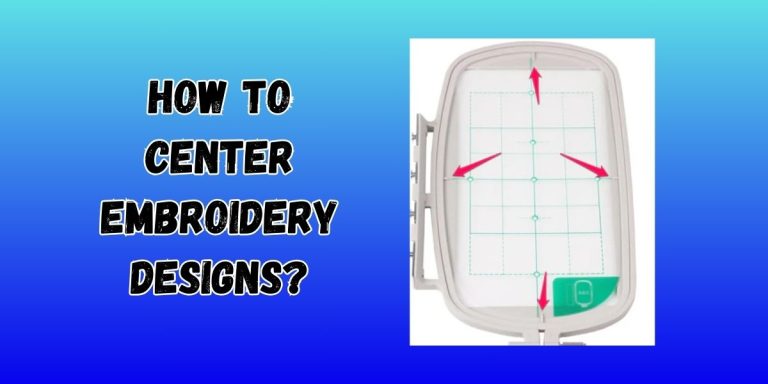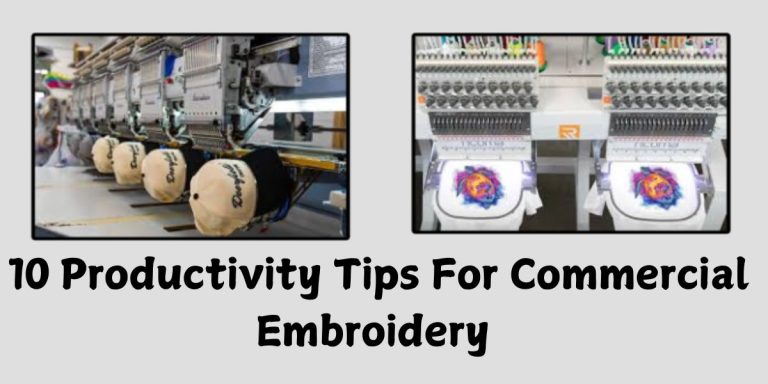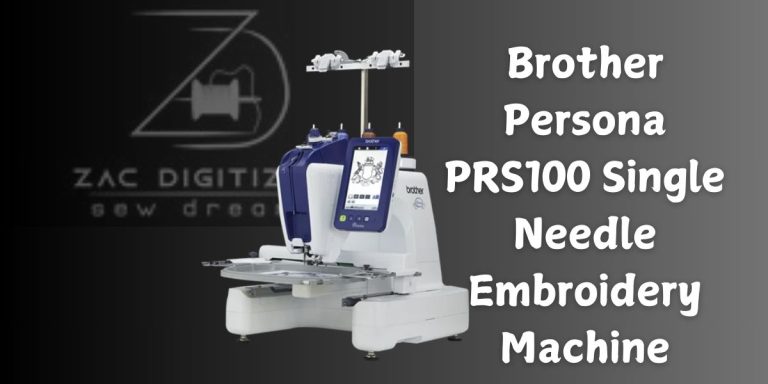How To Use Embroidery Hoops
Hoops are essential for both hand and machine embroidery to provide fabric tension and prevent puckering in embroidery designs. It’s a simple tool used for art handwork embroidery. This article will help you with the uses and types of hoops for embroidery purposes and uses of embroidery hoops in various embroidery techniques.

Introduction
An embroidery hoop is a simple essential tool used in the artwork to taut the fabric, prevent puckering, and provide tension embroidery. These circular and oval frames are made up of wood, plastic, and metal consisting of two inner and outer rings. The fabric is placed over an inner ring and secured with an outer ring which is tightened with a screw or clamp mechanism to hold the fabric taut.
Types Of Embroidery Hoops
Hopes come in various types and sizes each designed to suit different needs and preferences in the art of embroidery.
Round Hoops
Round hoops are the most traditional and widely used type of hoop in embroidery. This provides a firm and even tension on the fabric making it perfect and suitable for a variety of embroidery. It can be made up of various materials such as plastic, wood, or metal it comes in various sizes large(8 inches 20.3cm) medium(5 inches 12.7cm), and small (3 inches 7.6cm)
Advantages
- Availability in quizzes.
- Ensure uniform bounce and playability from all angles.
- Traditional and visually pleasing designs.
Disadvantages
- Limited flexibility in sizes.
Oval Hoops
Oval embroidery hoops are a popular choice among embroiderers for their uniqueness and versatility. They provide a different working compared or round hoops. which makes it ideal for its specific type of design and project.it is available in various materials plastic, wood, and metal in various sizes small 4 x 6 inches (10.2X15.2) large sizes 10 X 14 inches (25.4 X 35.6cm), and medium sizes 6 X 9 inches(15.2X 22.9 cm)are valuable in the oval hoops.
Advantages
- Good tension adjusting.
- Provide a larger working area.
- Easier to hold.
- Enhanced portability.
- Reduce hoop marks.
Disadvantages
- Higher cost.
- Awkward storage.
- Limited sizes range.
- Not ideal for all designs
Square Hoops
Square hoops are less common but highly versatile tools in the world of embroidery. They offer a unique alternative to the traditional rounded hoops. The square hoops provide a versatile option for embroiderers, especially for those projects that benefit from the Square embroidery designs. They can accommodate a wide range of embroidery designs available in all sizes small intricate large for detailed designs
Advantages
- Resists damage from weather and conditions.
- Increase stability compared to round hoops.
- Minimize puckering and distortion.
- Provides multiple hoop sizes.
- Easier to grip and tighten.
Disadvantages
- Riskie in fabric distortion.
- Limited design options.
- Handing complexities.
Rectangular Hoops
Rectangular embroidery hoops offer a specialized option for embroiderers of working projects of rectangular designs. Projects with elongated can easily be stitched in it and it is a good option for all skill levels. embroiders can avail it of all sizes.
Advantages
- Maximize space utilization.
- Suitable for larger projects.
- Ease to be used in certain designs.
- Less distortion.
Disadvantages
- Limited availability in the market.
- Less traditional aesthetic.
- Increase hoop marks.
- Difficult in placement.
Flexi Hoops
Flexi hoops usually known as spring tension hoops or Flexi frames are a modern alternative to traditional embroidery hoops. This offers a unique design featuring a flexible inner ring that is covered with a layer of fabric. It allows for easy and secure stitches without the need for tightening screws.
Advantages
- Lightweight and portable.
- Secure grips.
- Affordable in comparison to other hoops.
- Variety in sizes and designs.
- Easy to use.
- Compatible with machine embroidery.
- Suitable for sensitive fabric.
Disadvantages
- Limited tension control.
- Not suitable for all fabrics.
- Potential for hoop marks.
- Complexity in designs.
- Difficulty in balanced tension.
- The limited grip on the slippery fabric.
Q-snap Hoops
Q-snap hoops are popular and unique hoops to traditional hoops and offer a unique design that provides even tension-free across the fabric without the need for tightening screws. It consists of four interlocking plastic tubes that form square or rectangular firms. This is made up of lightweight and durable plastic tubes which interlock to form the frame. The tubes have specialized grooves which allow them to interlock securely.
Advantages
- Easy to use.
- Large size audibility.
- Comfortable to hold.
- Vestile for various embroidery types.
- Minimal fabric distortion.
Disadvantages
- Effective in the initial cost.
- Not suitable for all fabrics.
- Limited grip area.
- Less traditional appeal.
- Riskable for warming the fabric.
Uses Of Embroidery Hoops
- We have discussed the various types of hoops and introduced them but now it is time to learn the uses of these hoops in embroidery.
- The primary use of these hoops is for stitching. Which helps to maintain the tension of the fabric during stitching.
- Highly recommended for cross stitch embroidery to balance the tension of fabric.
- Crewel embroidery, which often involves intricate designs and stitches with wool or linen, is easier to work on with the help of a hoop to stabilize the fabric.
- Embroidery hoops are excellent tools for teaching embroidery and other needlework techniques.
- Hoops can be used as a frame for fabric printing techniques such as block printing or screen printing.
How To Use These Embroidery Hoops
Embroidery hoops can bring high-quality and professional embroidery designs for you in various types, sizes, and uses but a user must know how to use them. Here are some breakdown steps by steps to learn the uses of the hoops.
Select The Fabric
Choose the fabric you want to embroider on cotton and linen can be best for embroidery projects. Set it according to your embroidery design and hoop size that you select for your machine or handwork.
Separate The Hoop
An embroidery hoop consists of two separate rings, one with a tightening screw or clamp loose screw or claps to separate the ring to place the fabric.
Place The Fabric
The hoop consists of two parts, inner(small) and outer(larger) Place the fabric on the larger part flat your workspace, and center your fabric on a hoop. Once the fabric is well positioned, place the small hoop on the top of the fabric and make sure the screw and clasp must be on the side where you can easily access it.
Tighten The Hoop
To balance the tension of the fabric hold the fabric taut and gently push it down on the smaller hoop to secure it in place, before tightening the crew and clasp.
Check Tension and Start Stitching
After following the steps discussed in detail, now check the tension and start stitching to ensure that the hoop is set for embroidering on the fabric according to your expectations.
FAQs (Frequently Asked Questions)
Conclusion
Embroidery hooping is a tool for bringing professionalism and quality to your embroidery designs with various techniques and uses of the embroidery hoops in the embroidery machine. In this massive article, we have let you know the uses types with advantages of these hoops in the world of embroidery.






